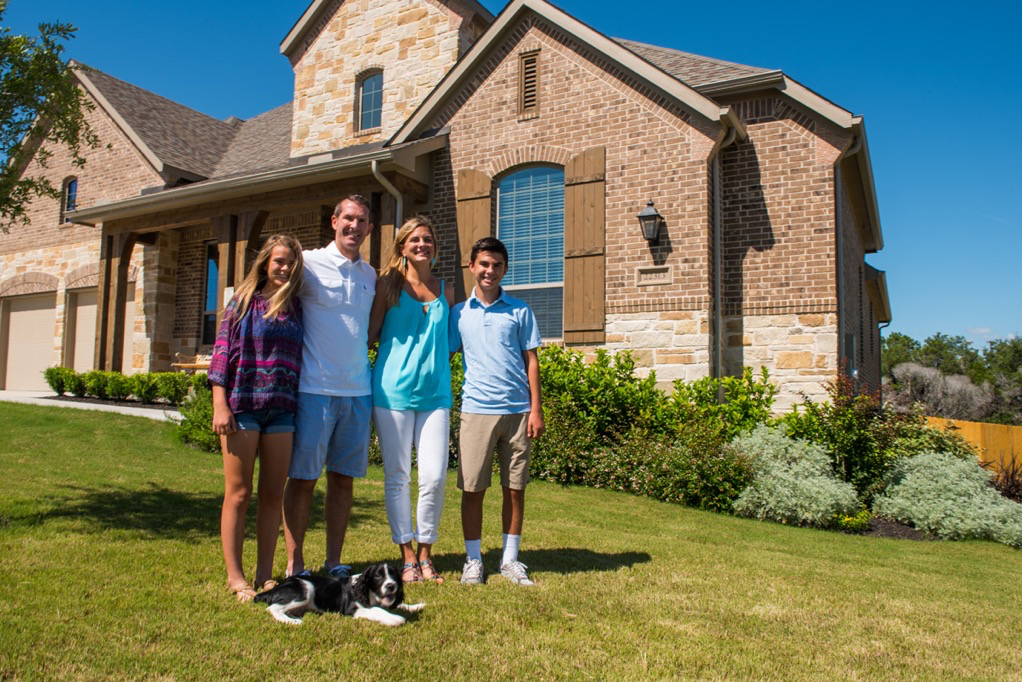When people think of types of homes or homeownership, they often think of a single-family home with a fence in a quiet neighborhood. However, there are numerous types of home styles, and each one comes with pros and cons. It depends on the best fit for you or your family’s lifestyle. If you’re looking to purchase a home and are still deciding which style to choose, we’ve put together a list of the top eight types of homes.
Single-family Homes
Single-family homes are a common type of home throughout the U.S. The stand-alone structure comes in all shapes, sizes, and architectural styles. This type of house does not share common walls, roofs, or land with any other individual. While single-family homes are a desired structure in the housing market, they have multiple pros and cons.
Single-Family Home Pros
- More Space & Independence
- Land Ownership
- Increased Equity & Value
Single Family Home Cons
- Higher Maintenance Costs
- Increased Responsibility
- Property Taxes
Townhomes
Townhomes are a row of homes that share a point of attachment. They differ from single-family homes in that they are constructed with a vertical floorplan rather than a horizontal resulting in two or more stories. The unique quality of a townhome is that it comes with all the perks of homeownership but with minimal responsibility for maintenance. The responsibility to maintain the grounds and amenities falls on the homeowner’s association (HOA). Townhomes are an excellent option for a couple or small family looking to settle down and ease into homeownership.
Townhouse Pros
- Affordability
- Shared Amenities with Neighbors
- Minimal Maintenance & Upkeep
- Community Living
Townhouse Cons
- Less Privacy
- Minimal Exterior Personalization
- HOA Limitations & Fees
- Lack of Space
Multi-family Homes
Multi-family homes are duplexes, triplexes, or attached living dwellings. While multi-family homes offer numerous opportunities for individuals, it comes with a significant upfront financial investment and commitment. Homeowners willing to commit will purchase a duplex or triplex and rent out the remaining space to cover mortgage costs. Multi-family homes are a great option for creating additional income, but they come with the responsibility of being an accountable landlord.
Multi-Family Pros
- Rent One Side, Live In The Other
- Tax Benefits
Multi-Family Cons
- Being A Landlord
- More Responsibility & Commitment
Modular Homes
A modular home is constructed in pieces in a factory off-site from a homeowner’s property. It is built to exact specifications to meet universal building code requirements. The only difference from a custom home build is that a modular home arrives in pieces from the factory and is put together in one day. Modular homes are affordable for individuals who own land and want to construct a quick and affordable home.
Modular Home Pros
- Affordability
- Faster Build Time
Modular Home Cons
- Transportation of Modular Home
- Foundation Construction & Costs
- Financing Difficulties
- Limited Personalization
Bungalows
Bungalows are generally referred to as cottages or charming small houses. The small square footage floor plan of a bungalow is ideal for a couple or retired couple wanting to live a minimal lifestyle while enjoying the perks of homeownership. Most bungalows are tucked into quaint residential neighborhoods and are typically in high demand in the housing market.
Bungalow Pros
- Smaller Size is Easier to Maintain
- High Level of Value & Charm
- Quiet Neighborhoods
Bungalow Cons
- Limited Space & Floorplan
- Limited Supply in the Housing Market
Ranch-Style Homes
Ranch-style homes became increasingly popular starting in the 1940s. And the style has remained popular for homeowners well into the twenty-first century. The one-story ranch homes offer excellent street appeal and ample-sized lots for backyard enjoyment and are commonly found in quiet residential neighborhoods.
Ranch-Style Home Pros:
- Simple Layout & Floorplan
- Easier to Maintain
Ranch-Style Home Cons:
- Smaller Yards
- Less Privacy
CONDOMINIUMS
Living in and owning a condominium significantly differs from living in a stand-alone home. In a condo, everyone in the building pays a fee to own an equal percentage of the shared amenities, such as a fitness center and pool, as well as general maintenance and upkeep. Condos are very similar to apartment-style living, where individuals live in multi-family buildings and share attached spaces. There are pros and cons to living in a condominium, which will differ depending on individual priorities.
Condos Pros
- Prime Location
- Security
- Access to Amenities
- Home Equity
Condos Cons
- No Land Ownership
- HOA & Maintenance Fees
- Parking & Storage Limitations
Apartments
Similar to condominiums, apartment share space inside a multi-family style building. However, the main difference is ownership. Apartments are rentals, while condos are most typically for ownership purposes. An apartment offers all of the same amenities as a condo but without any additional financial obligations of HOA fees. Apartments are an excellent option for young residents and individuals seeking minimal commitment.
Apartment Pros
- Security & Safety
- Increased Amenities
Apartment Cons
- No Ownership or Equity
- Limited Storage & Parking
- Reduced Privacy
Life At Lakeside
Which style of house is right for you? Contact Lakeside at Tessera to schedule a tour of our single-story and two-story homes with floor plans by our award-winning builders. . With numerous floor plan options and proximity to amenities and outdoor recreation, Lakeside might be just the place for your next home.

